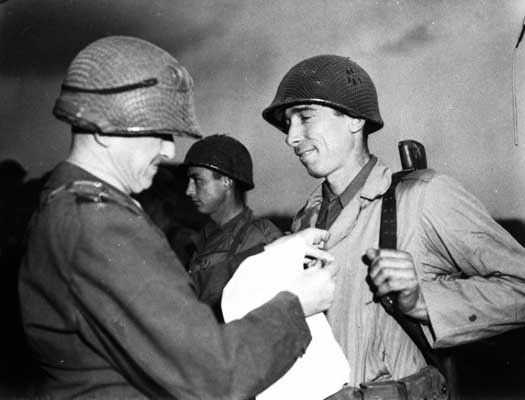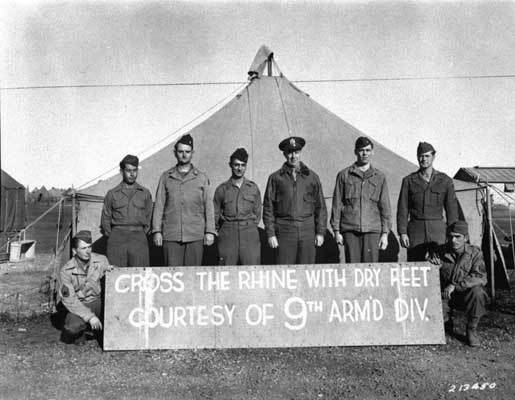
Capture of the Bridge at Remagen
The capture of the bridge at Remagen was an important milestone for American forces, permitting the Allies to transport troops and tanks across the Rhine River into the heartland of Nazi Germany.
By early February 1945, the Allies had regained all the ground lost during the Battle of the Bulge and resumed their advance into the Rhineland toward the Rhine River, the last natural barrier to Germany's heartland. They planned to launch assaults across the Rhine at several locations during March. The main assault was to be made by American and British troops near the town of Wesel, north of the Ruhr, Germany's industrial heart. Before this assault took place, however, the fortuitous capture of a bridge further south, near Bonn, changed the course of the battle.
In early March, Allied troops had reached the west bank of the Rhine River along most of the River's length, north of the city of Köln. Although most bridges spanning the river were blown up as American troops reached them, one was not. The Ludendorff Railroad Bridge at Remagen, between Koblenz and Bonn, was captured intact by troops of the US 9th Armored Division on March 7, 1945. Armored infantry fought their way across the bridge under intense enemy fire as the Germans attempted to destroy it with demolition charges. Several explosions damaged part of the bridge, but the main charges failed to fire and the bridge remained standing.

The rough terrain on the eastern bank of the Rhine at Remagen made the region a less than ideal avenue for the invasion of Germany in Allied strategic planning. Nonetheless, the Allies seized the opportunity to transport troops, tanks, and vehicles across a bridge, rather than over the river by assault boats and pontoon bridges. Allied plans were quickly adjusted to take advantage of this coup. Thousands of men and vehicles poured onto the bridgehead that, although suffering repeated German counterattacks for a week, continued to expand east of the Rhine.
Within a week of crossing the Rhine over the Ludendorff Bridge, seven US divisions had established themselves in strength east of the Rhine. On March 17, 1945, the Ludendorff, severely damaged in the fighting ten days earlier and weakened further from the strain of heavy traffic, collapsed into the Rhine. Having crossed the Rhine, the Allied armies prepared to drive into the interior of Germany.

Critical Thinking Questions
- What was the relationship between the progress of the war and the mass murder of Europe’s Jews?
- How did this campaign affect the course of the war?

